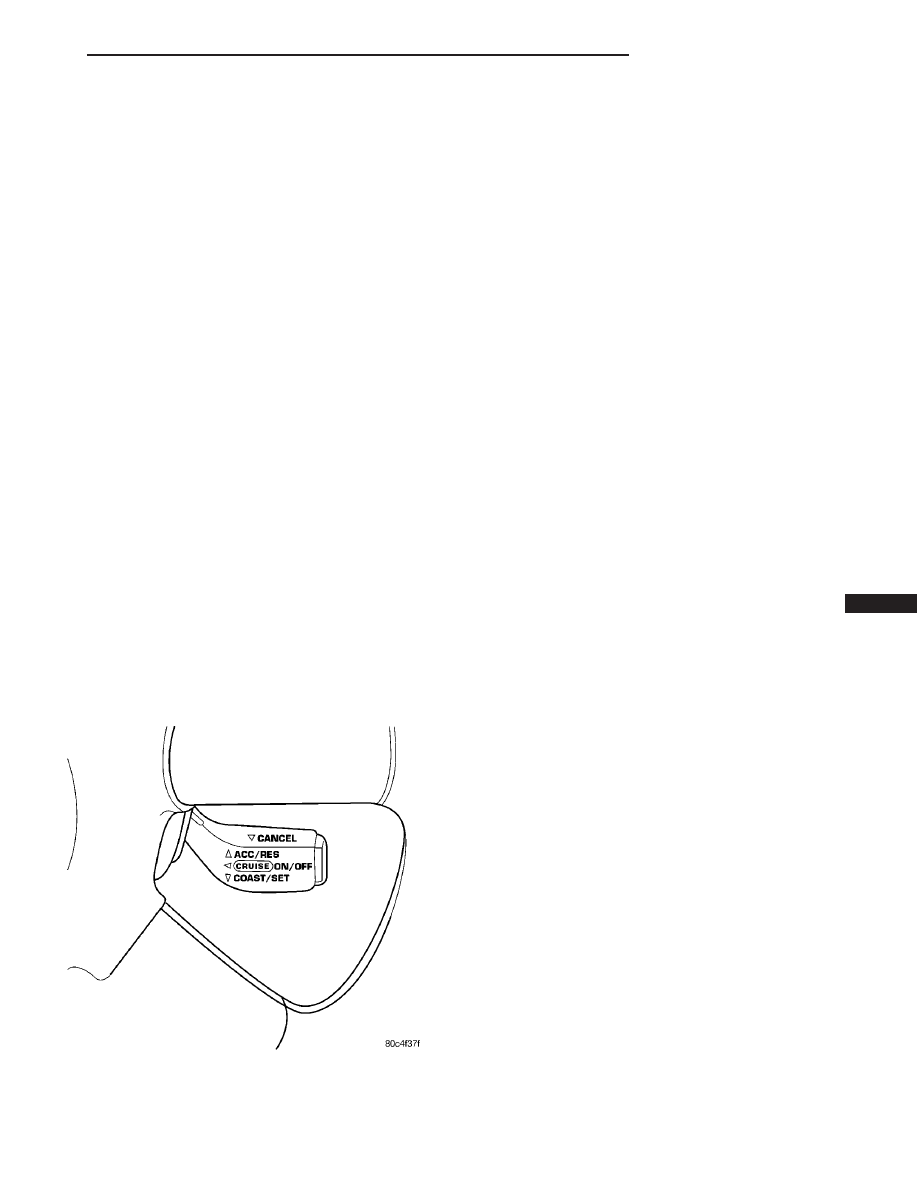Chrysler Sebring, Stratus sedan, Sebring Convertible. Manual - part 352

SPEED CONTROL
TABLE OF CONTENTS
page
page
SPEED CONTROL
. . . . . . . . . . . . . . . . . . . . . . . . 1
. . . . . . . . . . . . . . . . . . . . . . . . . . . . 2
. . . . . . . . . . . . . . . 3
SERVO
. . . . . . . . . . . . . . . . . . . . . . . . . . 3
. . . . . . . . . . . . . . . . . . . . . . . . . . . . 3
. . . . . . . . . . . . . . . . . . . . . . . . . . . . . 4
. . . . . . . . . . . . . . . . . . . . . . . . . . 4
SWITCH
. . . . . . . . . . . . . . . . . . . . . . . . . . . . . 4
. . . . . . . . . . . . . . . . . . . . . . . . . . 5
VACUUM RESERVOIR
. . . . . . . . . . . . . . . . . . . . . . . . . . 5
. . . . . . . . . . . . . . . . . . . . . . . . . . . . 5
. . . . . . . . . . . . . . . . . . . . . . . . . . . . . 5
. . . . . . . . . . . . . . . . . . . . . . . . . . 6
SPEED CONTROL
DESCRIPTION
DESCRIPTION
The speed control system is electronically con-
trolled and vacuum operated. The electronic control
is integrated into the Powertrain Control Module,
located on the left side of the engine compartment
next to the air cleaner. The controls are located on
the steering wheel and consist of a single switch. The
ON, OFF, RESUME, ACCEL, SET, COAST, and
CANCEL, lever is located on the right of the steering
wheel (Fig. 1).
The system is designed to operate at speeds above
25 mph (40 km/h).
WARNING: THE USE OF SPEED CONTROL IS NOT
RECOMMENDED WHEN DRIVING CONDITIONS DO
NOT PERMIT MAINTAINING A CONSTANT SPEED,
SUCH AS IN HEAVY TRAFFIC OR ON ROADS THAT
ARE WINDING, ICY, SNOW COVERED, OR SLIP-
PERY.
INTERACTIVE SPEED CONTROL
DESCRIPTION
Interactive means that communication between the
PCM and the TCM is taking place, this communica-
tion is internal to the PCM on NGC vehicles. Inter-
active speed control avoids unnecessary shifting for
smoother, quieter operation and when downshifts are
required, makes the shifts smoother.
CLIMBING A GRADE
DESCRIPTION
When climbing a grade the interactive speed con-
trol tries to maintain the set speed by increasing the
throttle opening, while inability/delaying downshifts.
OPERATION
If opening the throttle alone cannot maintain the
set speed and the vehicle speed drops more than
three mph below the set speed, the transmission will
downshift. If the vehicle continues to lose speed, by
more than 6 mph, the transmission will downshift
again maintain the set speed. After the vehicle
encounters a less-steep grade, or has crested the
grade (reduced the load on the powertrain) and can
maintain the set speed at a reduced throttle position,
the transmission will upshift, as appropriate, until
the set speed can be maintained.
Fig. 1 Speed Control Switch
JR
SPEED CONTROL
8P - 1